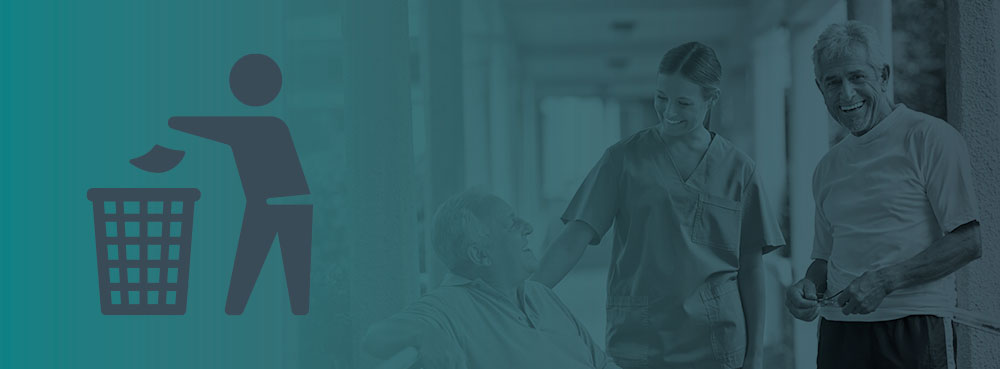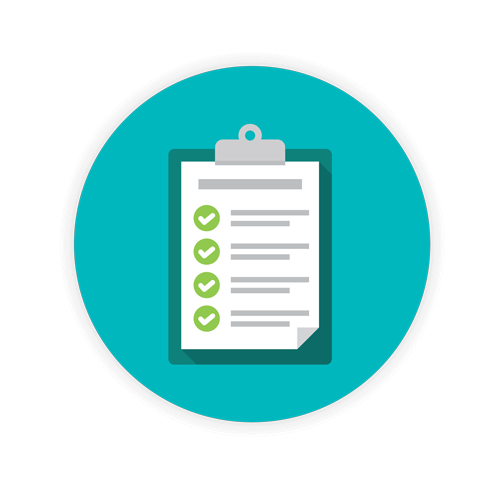Clinical Waste Considerations for Care Homes

Clinical waste management doesn’t just apply to hospitals, walk-in centres, or pharmacies. Other healthcare facilities such as care homes are also responsible for considering the safe management of healthcare waste.
TOPICS WE WILL COVER:
1 / Types of clinical waste from care homes
2 / What exactly is clinical waste?
3 / Strategies for proper care home waste management
4 / Waste segregation essential for compliance
5 / Devising a waste management policy
6 / Transportation and disposal
7 / Preperation is key to compliance
Types of clinical waste from care homes
Due to their very nature, care homes of all sizes, rural or urban, must necessarily deal with a variety of clinical waste categories. For this reason, up-to-date knowledge and compliance when it comes to waste segregation is important. Just a few types of healthcare waste generated by a care home can include but is not limited to:
- Sharps
- Pharmaceuticals (as well as expired drugs)
- Infectious waste
- Non infectious waste
- Contaminated personal protective equipment, IV tubing, and other supplies used not only for chronic conditions of the aging or disabled individual, but also acute care needs
Knowledge of regulations is vital not only for the safety of healthcare providers and staff, but the general public and the environment. One of the most important things to know is the definition of clinical waste.
What exactly is clinical waste?
As per the Controlled Waste Regulations of 1992, clinical waste refers to any waste that contains potentially hazardous materials from:
- Blood or body fluids
- Human or animal tissues
- Animal or human excretions
- Drugs as well as pharmaceutical products
- Wound dressings, swabs, and other potentially contaminated materials such as surgical gowns, gloves, masks, and so forth
- Syringes – not only needles but other sharp instruments that slash, cut or stab. To prevent needlestick injury, proper use of sharps containers throughout a facility is highly recommended.
Per Safe Management of Healthcare Waste (Health Technical Memorandum 07-01) regulations, clinical waste is generally divided into three primary types of material:
- Healthcare waste that poses risk of infection
- Healthcare waste that poses chemical hazards
- Medicines and medicinally contaminated waste that contains a pharmaceutically active agent
In most cases, clinical waste can be defined as potentially hazardous waste with only a couple of exceptions.
Strategies for proper care home waste management
Take steps to develop strategies for proper care home waste management to reduce the risk of non-compliance. Assess and evaluate your waste streams. Clinical waste from care homes – regardless of size – might possess potentially infectious substances. Does your staff know how to identify them?
Sharpsmart designs compliant, recyclable, and effective sharps containers and other waste containers based on medical waste streams for the ultimate protection of healthcare employees, the general public, and that also adhere to carriage regulations.
Anyone working in a care home should be trained to recognise that clinical waste might be infectious or non-infectious. For example, hazardous clinical waste can include waste that contains cytotoxic or cytostatic medicines and sharps, as well as potentially infectious anatomical waste. (Sharps that are not contaminated with body fluids or medicines are deemed non-clinical waste.)
It’s not only important to identify clinical waste at the point of origin to maintain compliance of a healthcare facility, but also to adhere to carriage regulations when transporting such waste off of the property.
Can your employees, from management down to housekeeping, identify and properly classify whether personal protective equipment, incontinence pads, or stoma or catheter bags would be deemed clinical waste or simply offensive waste? Does your staff know how to store and dispose of clinical waste? Has administration or management ensured that the site where healthcare waste is taken is properly authorised, permitted or licensed to accept waste streams from your facility?
According to Safe Management of Healthcare Waste, waste risk assessments should be performed on a patient specific basis in any community healthcare environment, including care homes. It is also vital that care home workers ensure that medical waste is properly segregated, defined, classified, and appropriately disposed of.
Waste segregation essential for compliance
It is the responsibility and duty of care of a care home to properly sort and store different waste streams. Such waste streams must be stored separately and properly labelled to prevent contamination or mixing of waste streams.
Regulations applicable for all types of healthcare waste management include clinical waste such as:
- Storing all categories of medical waste (waste streams) in secured areas not accessible to the general public;
- Use of proper containers for storage. For example, in containers that are rigid, spill-proof, puncture-proof, and leak-proof;
- Healthcare waste should be covered to prevent animal rummaging or runoff due to wet or windy weather conditions.
Maintaining complete compliance (as well as responsibility) for safe healthcare waste management relies on basic steps.
Devising a waste management policy
Creating a waste policy specifying responsibilities and procedures for safe and compliant healthcare waste management is the law. That also means performing routine audits to ensure compliance. Audits provide useful information regarding the quantity and type of waste streams produced at your care home. Such information is vital in the development of waste management policies and in maintaining compliance.
Involve staff in clinical waste management processes. One way to do that is providing occasional questionnaires for staff to fill out. These are beneficial in reviewing the level of staff education and knowledge for the handling, storage and disposal of different waste streams. Waste audits not only aid in compliance but provide direction for improvement.
Training is essential if any policies for compliance management are to be effective. Every staff member at a care home should be properly educated in regard to regulations. A number of tools are effective in training including photos, training posters, written guidelines and visible reminders that duty of care is everyone’s responsibility. This helps ensure compliance with facility policies and procedures as well.
Documentation is not only important, but required. As the saying goes, if it isn’t documented, it didn’t happen. Documentation is especially essential in waste transfer methods and management.
Transportation and disposal
Complete guidelines in regard to transport packaging and operations are found in the Safe Management of Healthcare Waste memorandum and fully cover regulations regarding labelling, documentation, and packaging of healthcare waste. The responsibility of such requirements are on the medical waste generator.
Transportation of clinical waste is subject to specific packing requirements from boxes and bags to wheelie bins. Specifications for how clinical waste is carried is also fully defined in the regulations.
Preparation is key to compliance
Care homes produce a wide variety of medical waste. Sharpsmart provides valuable resources, solutions, and guidance to ensure that your facility maintains compliance. We also focus on reducing the amount of waste heading to landfills, increasing safety of healthcare providers, and reducing the risk of fines and penalties for non-compliance. For information regarding clinical waste management, handling, storage or transportation solutions, contact Sharpsmart today.
Let's Talk!
Your time is valuable, and we don’t want to play hard to get. You can either phone us directly on the details listed on our contact page, or feel free to fill out this short form and one of our team members will get back to you as quickly as possible.
